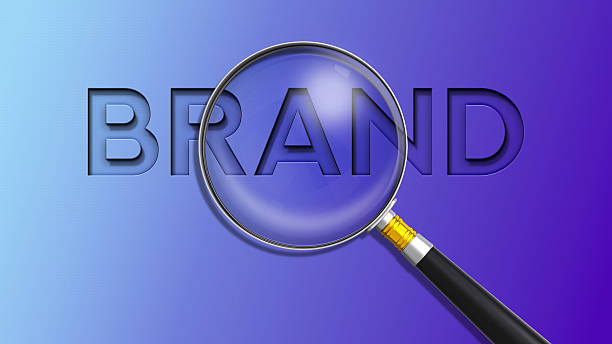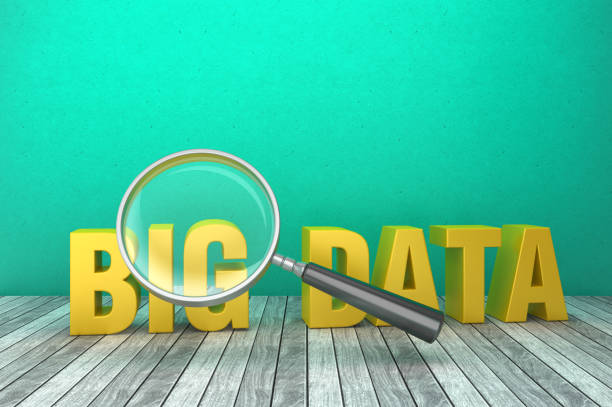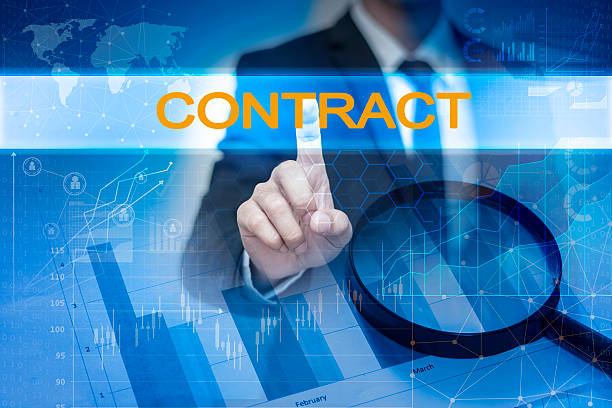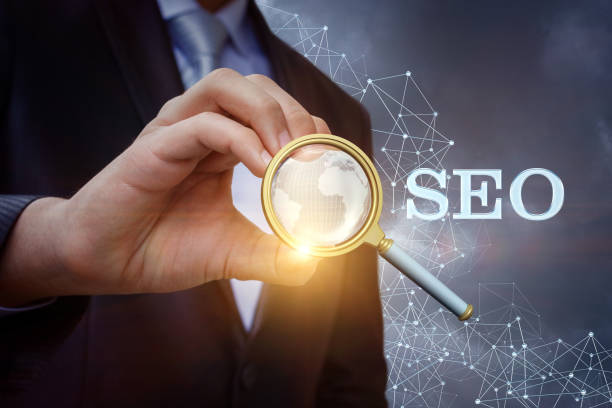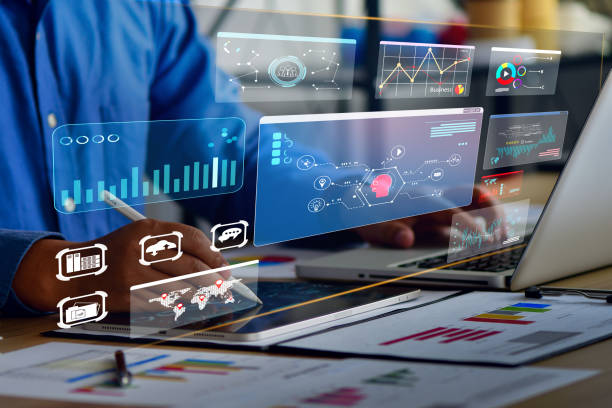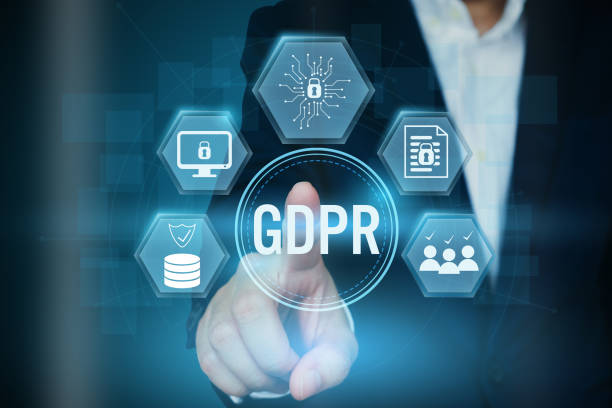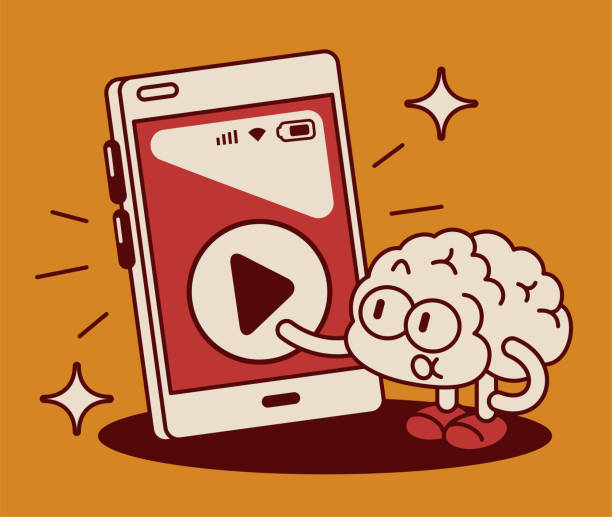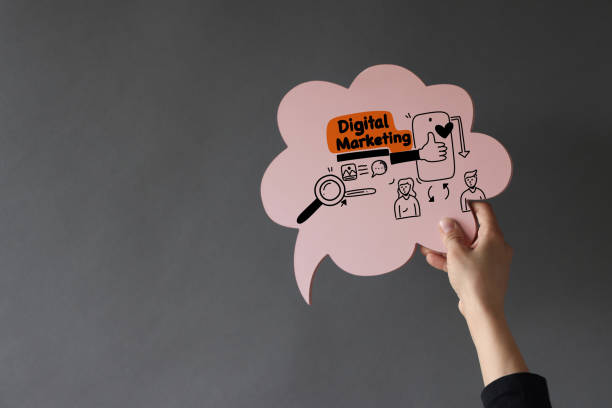What is On-Page SEO and Why is it Important?
#On-Page SEO is a set of actions taken to optimize web pages in order to improve their ranking in search engine results. These actions include optimizing content, site structure, HTML tags, and other factors related to the page itself.
The importance of On-Page SEO is very high because it helps search engines to better understand the content of your pages and index them correctly. By improving On-Page SEO, you can increase your site’s ranking in search results, attract more traffic, and ultimately achieve your business goals. On-Page SEO is the cornerstone of any successful SEO strategy, and without it, your other efforts in the field of Off-Page SEO and content production may not achieve the desired result.
The difference between On-Page SEO and Off-Page SEO is that On-Page SEO focuses on optimizing elements within the site, while Off-Page SEO focuses on factors such as link building and social networks that are outside of your site. Both types of SEO are necessary for success in search engines and should be done in a complementary manner. On-Page SEO increases the quality of the site and provides a better user experience, which itself helps to improve the site’s ranking.
Given the importance of On-Page SEO, it is necessary for business owners and webmasters to pay special attention to this issue and use appropriate techniques and solutions to optimize their pages. In the following of this article, we will examine these techniques and solutions in more detail. Finally, by implementing an On-Page SEO strategy, you can improve your website in search results.
Are you losing potential customers due to an unprofessional website? Rasaweb is your answer! With our specialized corporate website design services:
✅ Enhance the credibility and position of your business
✅ Experience attracting more targeted customers
⚡ Act now to receive a free consultation!
Keyword Research; The First Step in On-Page SEO
Keyword research is the first and most important step in On-Page SEO. Before you start writing content or optimizing web pages, you need to know what words users are searching for in search engines to find information related to your business. This information helps you tailor your content to the needs of users and increase the likelihood of it being seen in search results.
Click here to preview your posts with PRO themes ››
To perform keyword research, you can use various tools such as Google Keyword Planner, Ahrefs, SEMrush, and Keywordtool.io. These tools help you find keywords related to your business, check their search volume, and identify competitors’ keywords. You can also choose the best keywords for your website by using keyword research tools.
When choosing keywords, you should pay attention to a few points. First, the keywords must be relevant to your business. Second, the keywords must have a suitable search volume. Third, the keywords should have low competition. By considering these points, you can choose the right keywords for your On-Page SEO and optimize your content based on them. On-Page SEO with the right keywords increases your website traffic.
After selecting keywords, you should use them naturally and relevantly in your content. Excessive use of keywords can lead to your site being penalized by search engines. Therefore, you must maintain balance and intelligently incorporate keywords into your content. Optimal use of keywords in On-Page SEO improves your site’s ranking.
Optimizing Titles and Meta Descriptions
Titles and meta descriptions are important elements in On-Page SEO that help search engines and users learn about the content of your page. Titles are displayed as clickable links in search results, and meta descriptions are displayed as a summary of the page’s content below the title.
To optimize titles, you should use keywords related to the page’s content, write the title in an attractive and persuasive manner, and keep the title length between 50 and 60 characters. Longer titles may be cut off in search results and lose their impact. An optimized title in On-Page SEO can increase the click-through rate.
To optimize meta descriptions, you should provide a summary of the page’s content in an attractive and concise manner, use keywords related to the page’s content, and keep the meta description length between 150 and 160 characters. Meta descriptions should motivate users to click on your page’s link. A good meta description in On-Page SEO can attract more traffic.
Click here to preview your posts with PRO themes ››
Using unique titles and meta descriptions for each page of the site is very important. Avoid using duplicate titles and meta descriptions, as this can lead to your site being penalized by search engines. Optimizing titles and meta descriptions is one of the most important aspects of On-Page SEO. Using appropriate keywords in the title and meta description in On-Page SEO improves your site’s ranking.
| Attribute | Recommendation |
|---|---|
| Title Length | Between 50 and 60 characters |
| Meta Description Length | Between 150 and 160 characters |
| Keywords | Use relevant keywords |
| Uniqueness | Title and meta description should be unique for each page |
Content Optimization; The King of On-Page SEO
Content is the king of On-Page SEO. Search engines are looking for quality, relevant, and valuable content for users. By producing quality content, you can improve your site’s ranking in search results, attract more traffic, and increase your credibility in your industry. Content optimization in On-Page SEO is very important.
To optimize content, you should pay attention to a few points. First, the content must be relevant to the needs of users. Second, the content must be high quality and valuable. Third, the content must be up-to-date and fresh. Fourth, the content must have a suitable structure and be easy to read. Producing quality content in On-Page SEO increases user engagement.
Using keywords in content is one of the most important aspects of content optimization. You should place keywords related to your content in titles, subtitles, paragraphs, and text. But you should avoid overuse of keywords, as this can lead to your site being penalized by search engines. Appropriate use of keywords in On-Page SEO improves your keyword ranking.
In addition to using keywords, you should also pay attention to the structure of the content. The content should have clear and distinct titles and subtitles, the paragraphs should be short and relevant, and use images and videos to make the content more attractive. A structured content in On-Page SEO improves the user experience. On-Page SEO with quality content is the best way to promote your website.
Does your current corporate website not reflect your brand’s credibility and power as it should? Rasaweb solves this challenge for you with professional corporate website design.
✅ Increase the credibility and trust of visitors
✅ Attract more targeted customers
⚡ Click to get a free consultation!
Image Optimization
Image optimization is another important aspect of On-Page SEO. Images can help make content more attractive and improve the user experience, but if they are not properly optimized, they can reduce page loading speed and have a negative impact on SEO.
To optimize images, you should pay attention to a few points. First, the images must be saved in the appropriate format. JPEG and PNG formats are suitable for web images. Second, the images must be saved with the appropriate size. Large images can reduce page loading speed. Third, the images must have alternative text (Alt Text). Alternative text helps search engines learn about the content of the image. Image optimization in On-Page SEO improves your website loading speed.
When writing alternative text for images, you should use keywords related to the content of the image and write the text concisely and descriptively. Alternative text should help users learn about the content of the image, even if the image does not load correctly. Using alternative text in On-Page SEO improves your image SEO.
In addition to alternative text, you can also use titles and descriptions for images. Titles and descriptions of images can help search engines learn more about the content of the image. Image optimization is one of the important aspects of On-Page SEO is considered.
Internal Link Optimization
Internal links are links that connect different pages of your site to each other. Internal links can help search engines better understand the structure of your site, correctly index the content of your pages, and increase the SEO value of different pages of your site.
To optimize internal links, you should pay attention to a few points. First, the internal links must be relevant to the content of the page. Second, the internal links must point to important pages of your site. Third, the internal links must use appropriate anchor text. Anchor text is the text that the link is attached to. Optimizing internal links in On-Page SEO is very important.
When choosing anchor text for internal links, you should use keywords related to the content of the destination page and write the text concisely and descriptively. Anchor text should help users learn about the content of the destination page. Internal links in On-Page SEO improves the user experience.
Using internal links in content is one of the best ways to improve On-Page SEO. You should place internal links naturally and relevantly in your content and avoid linking to irrelevant pages. Appropriate use of internal links in On-Page SEO improves your site’s ranking. On-Page SEO is strengthened with the help of internal links.
URL Structure Optimization
The URL structure of your site’s pages should be understandable to both search engines and users. Clear and concise URLs can help search engines learn about the content of the page and help users easily find different pages of your site.
To optimize the URL structure, you should pay attention to a few points. First, the URLs should be short and concise. Second, the URLs should use keywords related to the content of the page. Third, the URLs should not use invalid characters. Optimizing the URL structure in On-Page SEO is very important.
When choosing keywords for URLs, you should use the main and important keywords and avoid using duplicate keywords. You should also avoid using numbers and special characters in URLs, as this can make the URLs incomprehensible to search engines and users. Appropriate use of keywords in URLs in On-Page SEO improves your keyword ranking.
In addition to keywords, you should also pay attention to the URL structure. URLs should have a logical and hierarchical structure, and related pages should be placed in similar subcategories. A regular and hierarchical URL structure in On-Page SEO improves the user experience.
| Attribute | Recommendation |
|---|---|
| URL Length | Short and concise |
| Keywords | Use relevant keywords |
| Invalid Characters | Do not use invalid characters |
| Structure | Logical and hierarchical structure |
Optimizing Page Loading Speed
Page loading speed is one of the important factors ranking in search engines. Users who encounter slow pages are more likely to leave your site and visit other sites. Also, search engines prefer to rank sites in search results that have a high loading speed. On-Page SEO improves with the help of page loading speed.
To optimize page loading speed, you can use various tools such as Google PageSpeed Insights and GTmetrix. These tools help you identify page loading speed problems and find appropriate solutions to fix them. Optimizing page loading speed in On-Page SEO is very important.
Some common solutions to improve page loading speed include: optimizing images, enabling Gzip compression, using browser cache, reducing the number of HTTP requests, and using CDN. By implementing these solutions, you can significantly increase your page loading speed. Increasing loading speed in On-Page SEO improves the user experience.
Optimizing page loading speed is one of the most important aspects of On-Page SEO. On-Page SEO performs better by increasing loading speed.
Are you frustrated by the low conversion rate of your online store? Rasaweb transforms your online store into a powerful tool for attracting and converting customers!
✅ Dramatically increase the conversion rate of visitors to buyers
✅ Unparalleled user experience to increase customer satisfaction and loyalty⚡ Get a free consultation from Rasaweb!
Optimizing Responsive Design
Responsive design means that your site should be displayed correctly on different devices such as computers, tablets, and smartphones. Given that a large number of users today access the internet through mobile devices, site responsiveness is one of the important ranking factors in search engines. On-Page SEO improves with responsive site.
To ensure the responsiveness of your site, you can use Google’s Mobile-Friendly Test tool. This tool shows you how your site is displayed on mobile devices and what problems it has. Optimizing the responsiveness of a site in On-Page SEO is very important.
If your site is not responsive, you should use a responsive template or design your site in such a way that it is displayed correctly on different devices. Site responsiveness ensures that users have a better user experience and are more likely to stay on your site. Increasing responsiveness in On-Page SEO improves the user experience.
Optimizing the responsiveness of a site is one of the most important aspects of On-Page SEO. On-Page SEO performs better with a responsive design.
Monitoring and Measuring On-Page SEO Results
After performing On-Page SEO measures , you should monitor your results and see if your efforts have paid off or not. For this, you can use various tools such as Google Analytics and Google Search Console. These tools help you check your site’s traffic, view your keyword rankings, and identify your site’s SEO problems.
Using this information, you can improve your On-Page SEO strategy and adjust your actions in such a way as to get the best results. Monitoring and measuring On-Page SEO results is an ongoing process and should be done regularly. Monitoring results in On-Page SEO is very important.
Accurately measuring On-Page SEO results helps you understand which of your actions have been effective and which actions need improvement. Using this information, you can allocate your resources more effectively and get the best results from your On-Page SEO efforts. Measuring results in On-Page SEO improves your performance. On-Page SEO is a comprehensive process and monitoring and measuring results is part of it.
Always remember that SEO is a long-term process and its results may not be immediately visible. But with continuous effort and the right measures, you can improve your site’s ranking in search results and attract more traffic. On-Page SEO improves your site’s ranking. Continuous effort in On-Page SEO leads to your progress.
Frequently Asked Questions
| Question | Answer |
|---|---|
| What is On-Page SEO? | On-Page SEO includes optimizing elements that are directly under your control and within your website. The goal is to help search engines better understand the content of the page and improve its ranking. |
| Why is On-Page SEO important? | On-Page SEO gives search engines clear signals about the content of the page, improves the user experience, and increases the chance of attracting organic traffic. |
| What are the most important factors of On-Page SEO? | Keywords, Title Tag, Meta Description, URL structure, quality content, image optimization, and internal links are among the most important factors. |
| What is the role of the Title Tag in On-Page SEO? | The title tag is one of the most important signals for search engines and users that specifies the main topic of the page. It should include the main keyword and be attractive. |
| How important is the Meta Description? | Meta descriptions do not directly affect ranking, but they can improve the click-through rate (CTR) by encouraging users to click. |
| How to optimize images for On-Page SEO? | By using a descriptive file name, appropriate Alt Text containing keywords, compression to reduce size, and correct dimensions. |
| What effect do Internal Links have on SEO? | Internal links help search engines discover and index site pages, distribute PageRank throughout the site, and improve user navigation. |
| Is page loading speed one of the On-Page SEO factors? | Yes, page loading speed is a vital factor in On-Page SEO and user experience. Slower pages can lead to higher bounce rates and lower rankings. |
| What are the characteristics of quality content for On-Page SEO? | Quality content should be comprehensive, unique, relevant, reliable, readable, and fully answer users’ needs and questions. |
| How can keywords be used in content? | Keywords should be used naturally in the title, subtitles, first paragraph, body of text, and alternative text of images. Avoid Keyword Stuffing. |
And other services of Rasa Web advertising agency in the field of advertising
Intelligent brand identity: A creative platform to improve website traffic with Google Ads management.
Intelligent website development: A new service to increase online growth through Google Ads management.
Intelligent advertising campaign: Transform SEO ranking by customizing the user experience.
Intelligent link building: A creative platform to improve SEO ranking by designing an attractive user interface.
Intelligent SEO: A combination of creativity and technology for campaign management by Google Ads management.
And more than hundreds of other services in the field of internet advertising, advertising consulting and organizational solutions
Internet Advertising | Advertising Strategy | Advertorial
Resources
On-Page SEO training to increase site ranking
,What is On-Page SEO and how is it done?
,What is On-Page SEO? A comprehensive guide to On-Page SEO
,What is On-Page SEO? A comprehensive guide to On Page SEO
? For your business to shine in the digital world, Rasaweb Afarin, with expertise in multilingual website design and comprehensive digital marketing solutions, is by your side.
📍 Tehran, Mirdamad Street, next to the Central Bank, South Kazerun Alley, Ramin Alley No. 6


